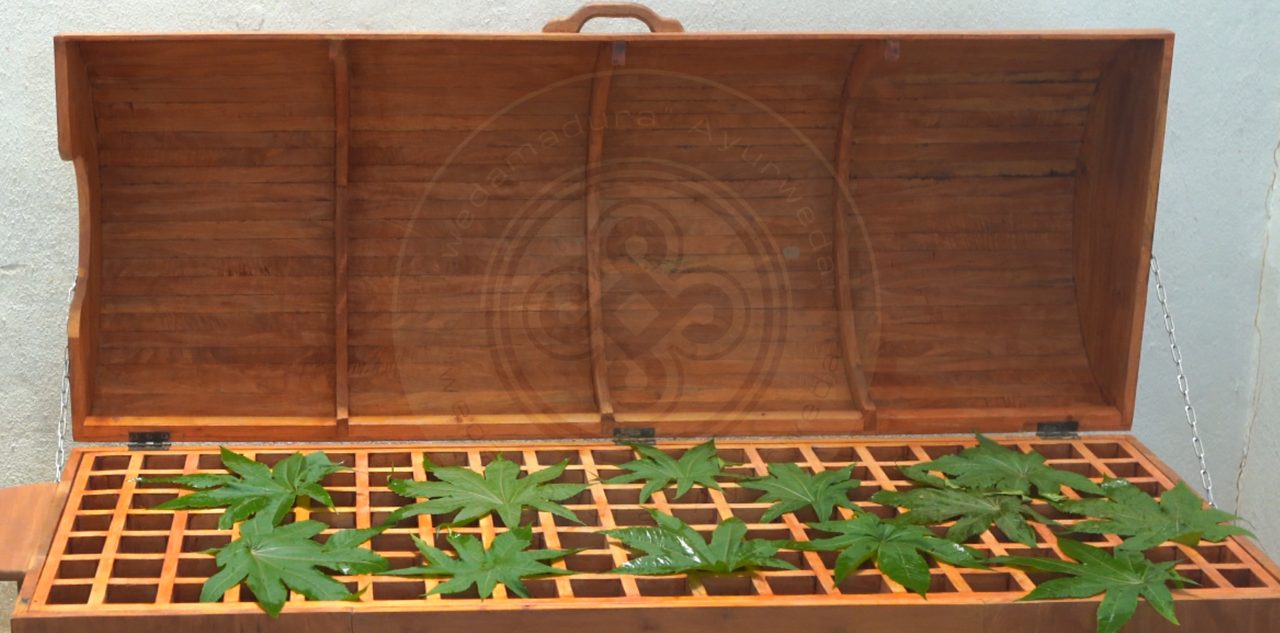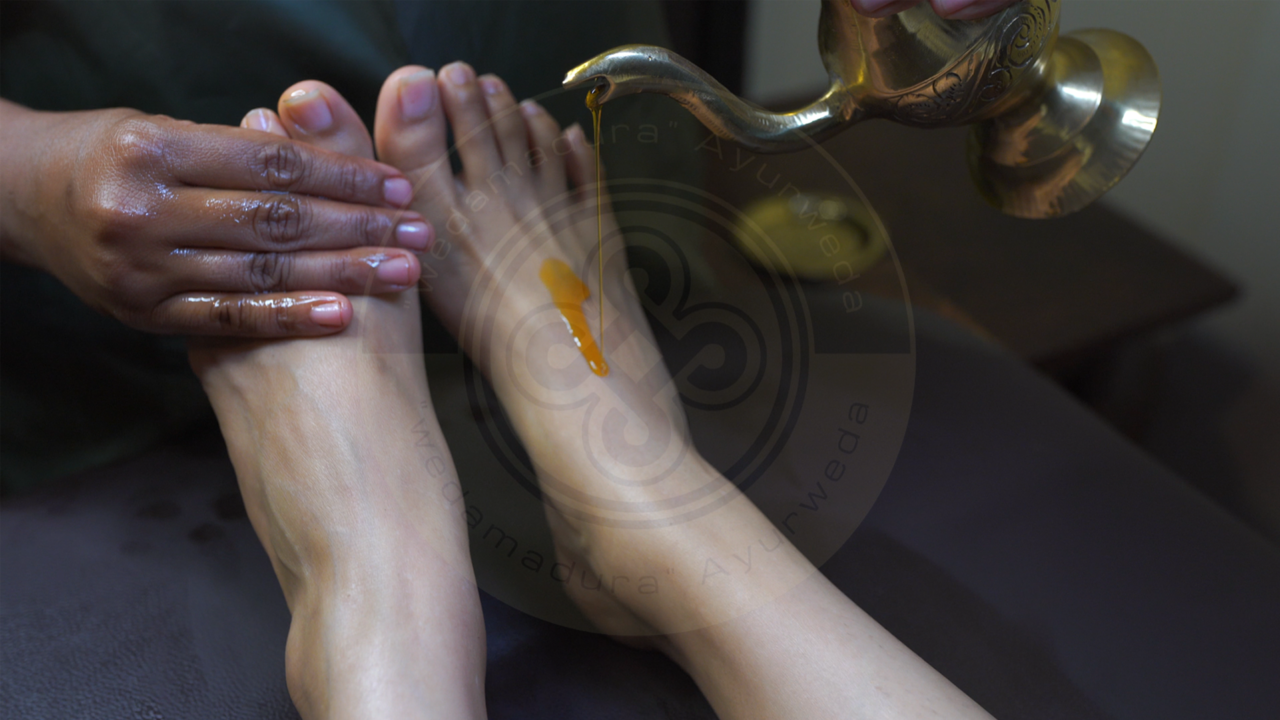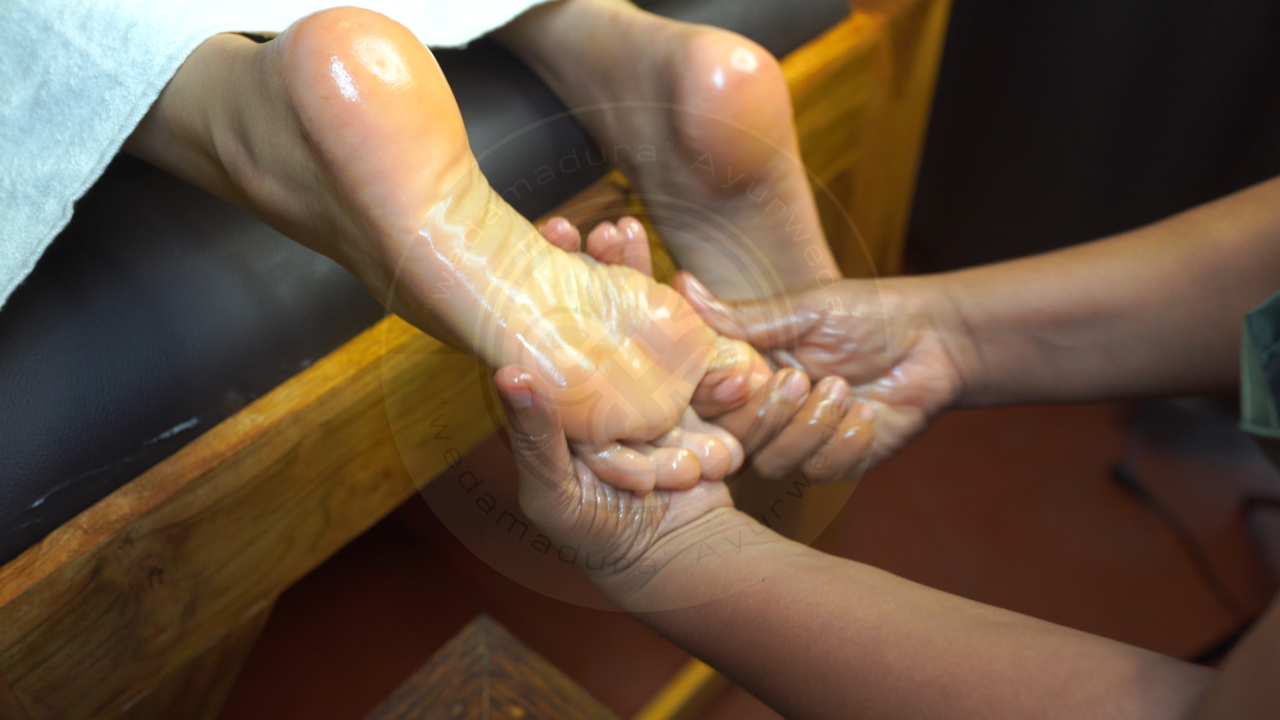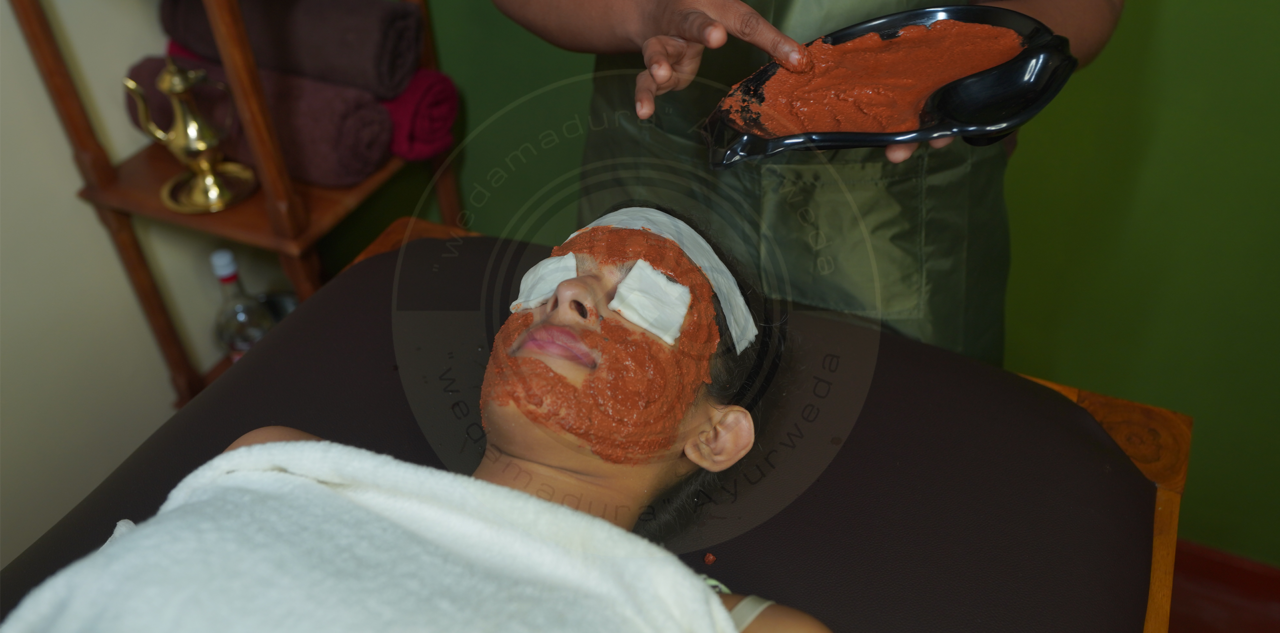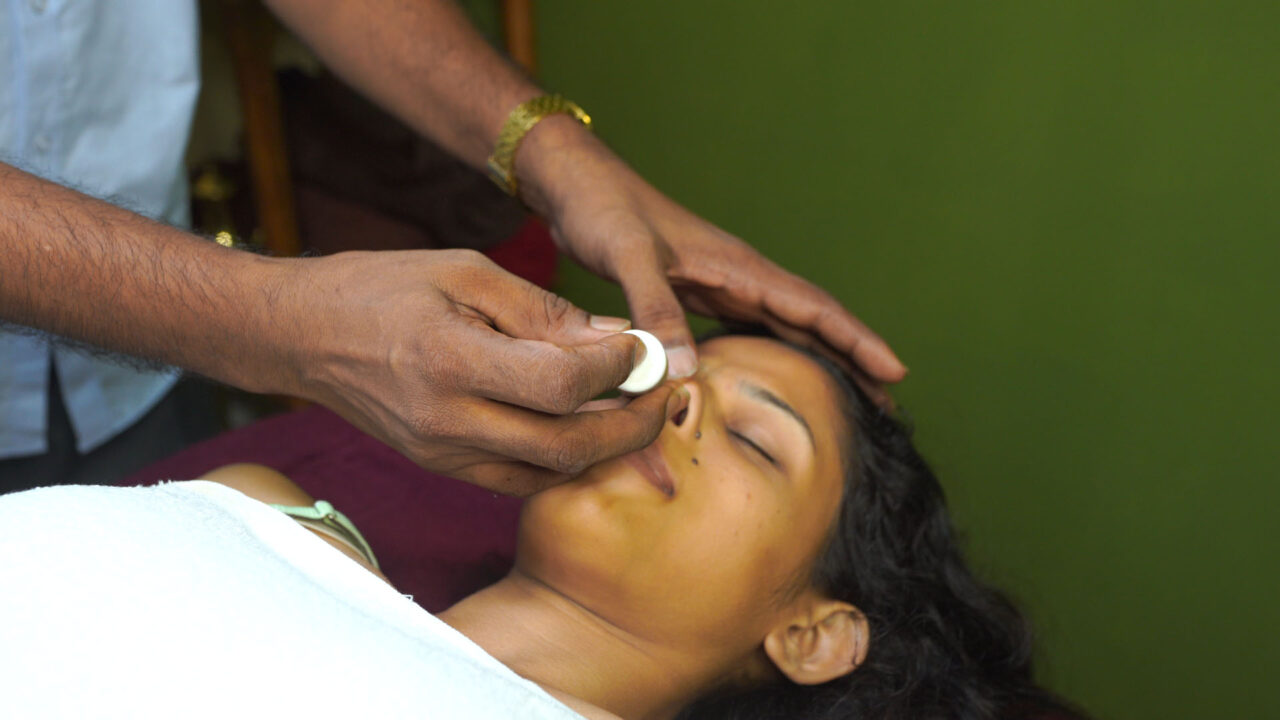- + (94) 773-674-288
- 170/A, Tiverton, Colombo Road, Peradeniya

Ayurveda, the ancient Indian system of medicine, offers a holistic approach to health and wellness. Among its many treatments, Janu Vasti (also known as Janu Basti) stands out for its effectiveness in addressing knee-related issues. This treatment involves the application of warm medicated oils to the knee joint, providing relief from pain and stiffness. In this comprehensive guide, we will explore the benefits, history, indications, and detailed procedure of Janu Vasti.
History of Janu Vasti
The origins of Janu Vasti can be traced back to the ancient texts of Ayurveda, which date back over 5,000 years. Ayurveda, meaning "science of life," emphasizes the balance of the body's three doshas: Vata, Pitta, and Kapha. Janu Vasti is specifically designed to balance the Vata dosha, which governs movement and is often associated with joint health.
Benefits of Janu Vasti
Janu Vasti offers a multitude of benefits, particularly for those suffering from knee pain and related conditions. Here are some of the key benefits:
- Pain Relief: The warm medicated oils used in Janu Vasti penetrate deep into the tissues, providing significant relief from pain and discomfort.
- Improved Joint Mobility: Regular sessions of Janu Vasti can enhance the flexibility and range of motion of the knee joint.
- Reduced Inflammation: The anti-inflammatory properties of the oils help in reducing swelling and inflammation around the knee.
- Strengthening of Knee Structures: Janu Vasti strengthens the muscles, tendons, and ligaments around the knee, promoting overall joint health.
- Detoxification: The treatment aids in the removal of toxins from the knee joint, improving overall joint function.
Indications for Janu Vasti
- Osteoarthritis: A degenerative joint disease that causes pain and stiffness.
- Rheumatoid Arthritis: An autoimmune disorder that leads to inflammation of the joints.
- Meniscal Tears: Injuries to the cartilage in the knee.
- Ligament Injuries: Such as ACL (anterior cruciate ligament) injuries.
- Patellar Tendonitis: Inflammation of the tendon connecting the kneecap to the shinbone.
- Knee Bursitis: Inflammation of the bursae, the small fluid-filled sacs that cushion the knee.
Detailed Procedure of Janu Vasti
The procedure of Janu Vasti involves several steps, each designed to maximize the therapeutic benefits of the treatment:
- Preparation (Purvakarma): The Ayurvedic practitioner assesses the patient's condition and determines the appropriate type of oil and duration of treatment. A dough ring is made and placed around the knee to create a reservoir.
- Main Procedure (Pradhana Karma): Warm medicated oil is poured into the dough ring and allowed to sit for a specified duration, usually 30-45 minutes. Gentle massage is performed to enhance absorption.
- Post-Procedure (Paschat Karma): The oil is removed, the knee cleaned, and the patient advised to rest.
Janu Vasti is a powerful Ayurvedic treatment that offers significant relief from knee pain and related conditions. By understanding its benefits, history, indications, and detailed procedure, individuals can make informed decisions about incorporating this therapy into their wellness routine. Always consult with a qualified Ayurvedic practitioner to ensure the treatment is tailored to your specific needs.
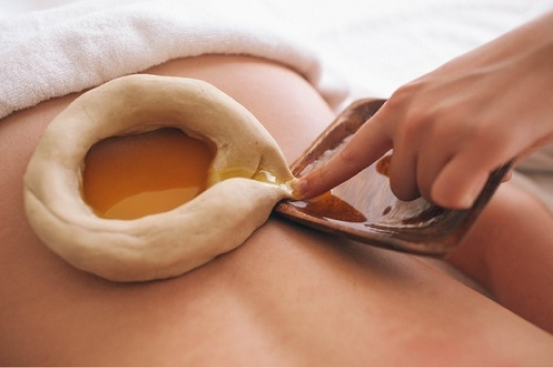
Ayurveda, the ancient Indian system of medicine, offers a holistic approach to health and wellness. Among its many treatments, Kati Vasti (also known as Kati Basti) stands out for its effectiveness in addressing lower back pain and related conditions. This treatment involves the application of warm medicated oils to the lower back, providing relief from pain and stiffness. In this comprehensive guide, we will explore the benefits, history, indications, and detailed procedure of Kati Vasti.
History of Kati Vasti
The origins of Kati Vasti can be traced back to the ancient texts of Ayurveda, which date back over 5,000 years. Ayurveda, meaning "science of life," emphasizes the balance of the body's three doshas: Vata, Pitta, and Kapha. Kati Vasti is specifically designed to balance the Vata dosha, which governs movement and is often associated with joint and muscle health.
Benefits of Kati Vasti
Kati Vasti offers a multitude of benefits, particularly for those suffering from lower back pain and related conditions. Here are some of the key benefits:
- Pain Relief: The warm medicated oils used in Kati Vasti penetrate deep into the tissues, providing significant relief from pain and discomfort.
- Improved Joint Mobility: Regular sessions of Kati Vasti can enhance the flexibility and range of motion of the lower back.
- Reduced Inflammation: The anti-inflammatory properties of the oils help in reducing swelling and inflammation around the lower back.
- Strengthening of Back Structures: Kati Vasti strengthens the muscles, tendons, and ligaments around the lower back, promoting overall joint health.
- Detoxification: The treatment aids in the removal of toxins from the lower back, improving overall joint function.
Indications for Kati Vasti
- Lower Back Pain: A common disorder involving the muscles and bones of the lower back.
- Lumbar Spondylosis: A type of degenerative osteoarthritis of the joints of the lower back.
- Sciatica: Pain affecting the back, hip, thigh, and outer side of the leg, caused by compression of a spinal nerve root in the lower back.
- Herniated Discs: Injuries to the intervertebral discs in the lower back.
- Muscle Spasms: Involuntary contractions of the muscles in the lower back.
- General Fatigue and Stiffness: Chronic stiffness and fatigue in the lower back.
Detailed Procedure of Kati Vasti
The procedure of Kati Vasti involves several steps, each designed to maximize the therapeutic benefits of the treatment:
- Preparation (Purvakarma): The Ayurvedic practitioner assesses the patient's condition and determines the appropriate type of oil and duration of treatment. A dough ring is made and placed around the lower back to create a reservoir.
- Main Procedure (Pradhana Karma): Warm medicated oil is poured into the dough ring and allowed to sit for a specified duration, usually 30-45 minutes. Gentle massage is performed to enhance absorption.
- Post-Procedure (Paschat Karma): The oil is removed, the lower back cleaned, and the patient advised to rest.
Kati Vasti is a powerful Ayurvedic treatment that offers significant relief from lower back pain and related conditions. By understanding its benefits, history, indications, and detailed procedure, individuals can make informed decisions about incorporating this therapy into their wellness routine. Always consult with a qualified Ayurvedic practitioner to ensure the treatment is tailored to your specific needs.

Ayurveda, the ancient Indian system of medicine, offers a holistic approach to health and wellness. Among its many treatments, Uro Vasti (also known as Uro Basti) stands out for its effectiveness in addressing chest-related issues, particularly those affecting the heart and lungs. This treatment involves the application of warm medicated oils to the chest region, providing relief from pain, congestion, and respiratory problems. In this comprehensive guide, we will explore the benefits, history, indications, and detailed procedure of Uro Vasti.
History of Uro Vasti
The origins of Uro Vasti can be traced back to the ancient texts of Ayurveda, which date back over 5,000 years. Ayurveda, meaning "science of life," emphasizes the balance of the body's three doshas: Vata, Pitta, and Kapha. Uro Vasti is specifically designed to balance the Vata dosha, which governs respiratory and circulatory health.
Benefits of Uro Vasti
Uro Vasti offers a multitude of benefits, particularly for those suffering from chest pain and related conditions. Here are some of the key benefits:
- Pain Relief: The warm medicated oils used in Uro Vasti penetrate deep into the tissues, providing significant relief from pain and discomfort.
- Improved Respiratory Function: Regular sessions of Uro Vasti can enhance lung capacity and improve breathing.
- Reduced Inflammation: The anti-inflammatory properties of the oils help in reducing swelling and inflammation around the chest.
- Strengthening of Chest Structures: Uro Vasti strengthens the muscles, tendons, and ligaments around the chest, promoting overall respiratory health.
- Detoxification: The treatment aids in the removal of toxins from the chest region, improving overall function.
Indications for Uro Vasti
- Respiratory Disorders: Such as asthma, bronchitis, and chronic obstructive pulmonary disease (COPD).
- Heart Conditions: Including hypertension, coronary artery disease, and palpitations.
- Muscular Chest Pain: Pain affecting the muscles around the chest.
- Dry, Hacking Cough: Persistent cough that is dry and painful.
- Post-Surgical Recovery: To aid in the recovery process after chest surgery.
Detailed Procedure of Uro Vasti
The procedure of Uro Vasti involves several steps, each designed to maximize the therapeutic benefits of the treatment:
- Preparation (Purvakarma): The Ayurvedic practitioner assesses the patient's condition and determines the appropriate type of oil and duration of treatment. A dough ring is made from black gram flour and placed around the chest to create a reservoir.
- Main Procedure (Pradhana Karma): Warm medicated oil is poured into the dough ring and allowed to sit for a specified duration, usually 30-45 minutes. Gentle massage is performed to enhance absorption.
- Post-Procedure (Paschat Karma): The oil is carefully removed, the chest cleaned, and the patient is advised to rest and avoid strenuous activities for a few hours.
Types of Oils Used in Uro Vasti
- Mahanarayan Oil: Known for its anti-inflammatory and analgesic properties.
- Ksheerabala Oil: Effective in treating Vata-related disorders.
- Dhanwantharam Oil: Used for its rejuvenating and strengthening effects.
Precautions and Contraindications
- Acute Inflammation: Avoid the treatment if there is acute inflammation or infection in the chest.
- Fever: Do not undergo Uro Vasti during episodes of fever.
- Severe Skin Conditions: Avoid if there are severe skin conditions around the chest.
Uro Vasti is a powerful Ayurvedic treatment that offers significant relief from chest pain and related conditions. By understanding its benefits, history, indications, and detailed procedure, individuals can make informed decisions about incorporating this therapy into their wellness routine. Always consult with a qualified Ayurvedic practitioner to ensure the treatment is tailored to your specific needs.
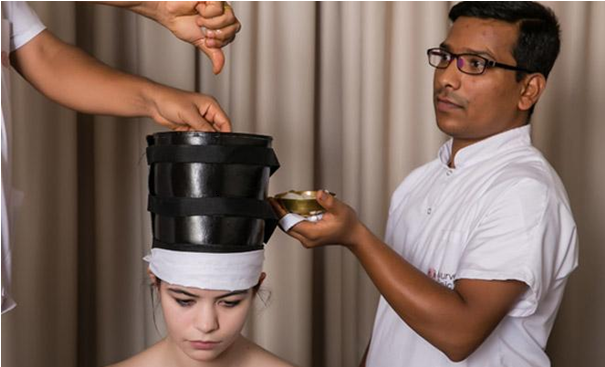
Ayurveda, the ancient Indian system of medicine, offers a holistic approach to health and wellness. Among its many treatments, Shiro Vasti stands out for its effectiveness in addressing head-related issues. This treatment involves the application of warm medicated oils to the head, providing relief from stress, anxiety, and various neurological conditions. In this comprehensive guide, we explore the benefits, history, indications, and detailed procedure of Shiro Vasti.
History of Shiro Vasti
The origins of Shiro Vasti can be traced back to the ancient texts of Ayurveda, which date back over 5,000 years. This treatment is specifically designed to balance the Vata dosha, which governs movement and is often associated with neurological and psychological health.
Benefits of Shiro Vasti
- Pain Relief: Provides significant relief from headaches and migraines.
- Improved Cognitive Function: Enhances memory, concentration, and overall cognitive function.
- Reduced Anxiety and Stress: Calms the mind, reducing anxiety and stress.
- Nourishment of Hair and Scalp: Nourishes hair roots, preventing hair loss and promoting healthy hair.
- Improved Sleep: Promotes better sleep by calming the mind.
- Detoxification: Aids in the removal of toxins from the head region.
Indications for Shiro Vasti
- Chronic headaches and migraines.
- Neurological disorders such as epilepsy and multiple sclerosis.
- Psychological issues including stress and depression.
- Insomnia and sleep disorders.
- Hair and scalp problems.
Detailed Procedure of Shiro Vasti
- Preparation: The practitioner assesses the patient’s condition and prepares the oil and cap.
- Main Procedure: Warm medicated oil is poured into the cap and allowed to sit for 30-45 minutes.
- Post-Procedure: The oil is removed, and the patient is advised to rest.
Types of Oils Used in Shiro Vasti
- Mahanarayan Oil: Known for its anti-inflammatory properties.
- Ksheerabala Oil: Effective for Vata-related disorders.
- Dhanwantharam Oil: Rejuvenating and strengthening effects.
Shiro Vasti is a powerful Ayurvedic treatment offering significant relief from head-related conditions. Always consult a qualified Ayurvedic practitioner to ensure the treatment suits your specific needs.

In today's fast-paced world, weight management has become a significant concern for many. Ayurveda, the ancient Indian system of medicine, offers a holistic approach to weight loss that focuses on balancing the body's energies and promoting overall well-being. This comprehensive guide will delve into the benefits, history, indications, and detailed procedures of Ayurvedic weight loss treatments.
History of Ayurvedic Weight Loss Treatment
Ayurveda, meaning "science of life," is a 5,000-year-old system of natural healing that has its origins in the Vedic culture of India. It emphasizes the balance of the body's three doshas: Vata, Pitta, and Kapha. According to Ayurveda, weight gain is primarily due to an imbalance in the Kapha dosha, which is associated with earth and water elements.
Benefits of Ayurvedic Weight Loss Treatment
- Holistic Approach: Addresses the root cause of weight gain by balancing the doshas and improving overall health.
- Natural Remedies: Involves the use of natural herbs and therapies, minimizing the risk of side effects.
- Improved Digestion: Enhances digestive fire (Agni), aiding metabolism and weight management.
- Detoxification: Detox procedures like Panchakarma remove toxins (Ama) contributing to weight gain.
- Mental Well-being: Reduces stress and promotes a positive mindset, crucial for weight loss.
Indications for Ayurvedic Weight Loss Treatment
- Obesity: Excessive body weight posing health risks.
- Metabolic Disorders: Conditions like diabetes and thyroid imbalances.
- Digestive Issues: Poor digestion and slow metabolism.
- Stress and Emotional Eating: Weight gain due to stress and emotional factors.
- Sedentary Lifestyle: Lack of physical activity leading to weight gain.
Detailed Procedures of Ayurvedic Weight Loss Treatment
- Personalized Diet Based on Dosha: Tailored dietary recommendations for Kapha, Pitta, and Vata doshas.
- Herbal Remedies: Use of Triphala, Guggul, and Garcinia Cambogia to support weight loss.
- Detox Therapies (Panchakarma): Includes Vamana, Virechana, Basti, Nasya, and Raktamokshana to cleanse the body.
- Lifestyle Modifications: Regular exercise, stress management, and a structured daily routine (Dinacharya).
Ayurvedic weight loss treatments offer a holistic and natural approach to managing weight. Always consult with a qualified Ayurvedic practitioner to ensure the treatment suits your specific needs.

